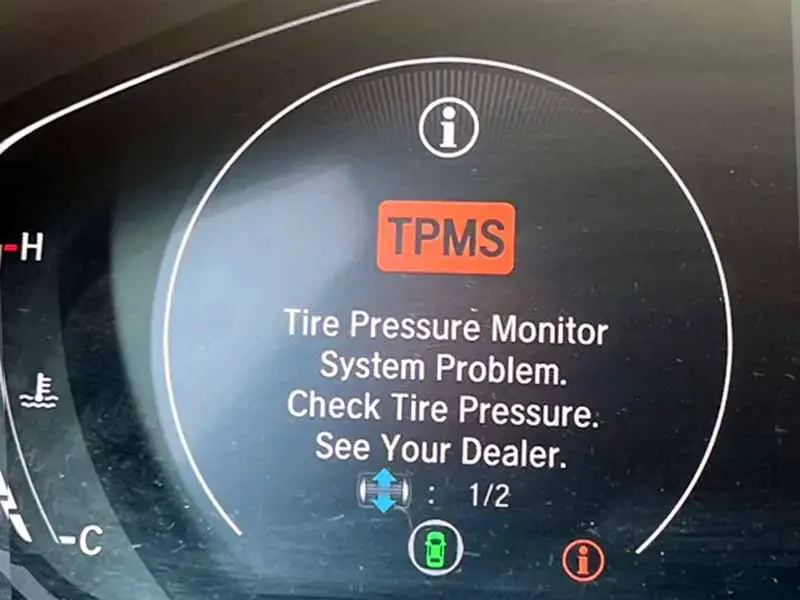Have you ever glanced at the tire pressure monitoring system warning light on your dashboard, shaped like a flattened tire with an exclamation mark, and wondered what secrets it holds? Behind that curious little symbol lies a world of technology that monitors your tires’ pressure, ensuring your safety and smooth drive. It’s not just a symbol; it’s a guardian, a vigilant eye that never sleeps. But how does it do all this?
How Do Tire Pressure Sensors Work?
Tire Pressure Monitoring Systems (TPMS) work by using sensors located in the tires. These sensors measure the air pressure and communicate the information to the car’s computer, triggering an alert if the pressure is too high or too low.
In this article, we’ll explore the fascinating world of TPMS, delving into its components, how it communicates with your vehicle, what triggers its alerts, the longevity and common issues, and how it behaves when tires are rotated or changed. A must-read for anyone keen on understanding the unseen technology that plays a vital role in our daily drives.
Let’s take a closer look.
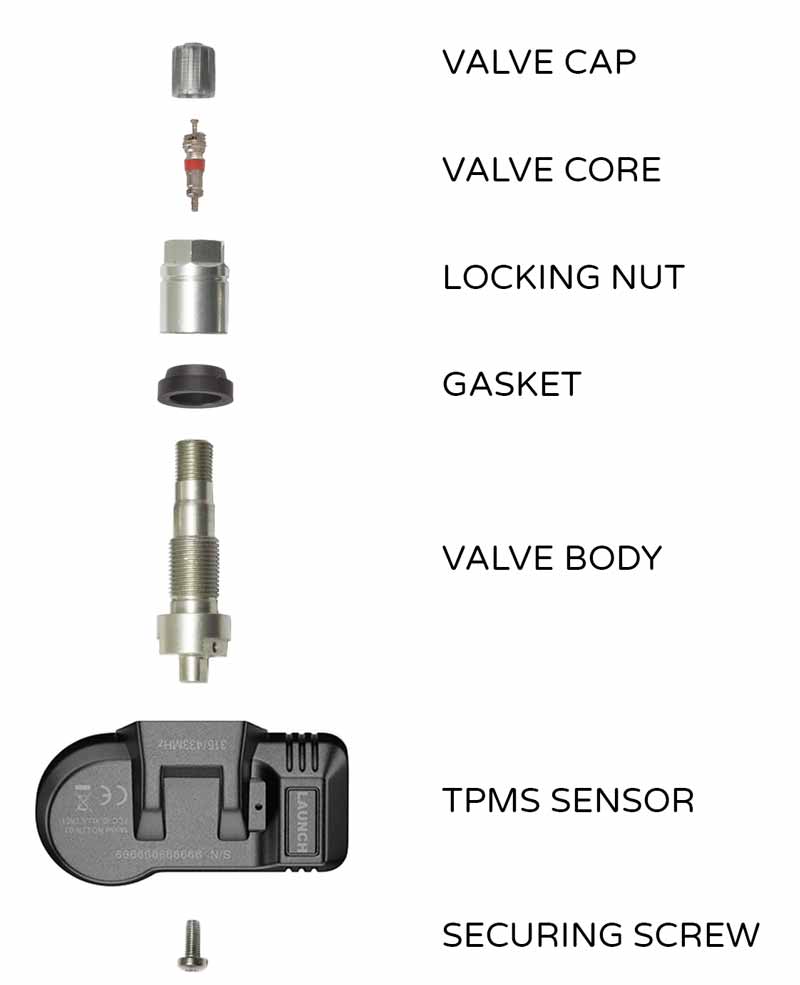
How TPMS Sensors Work
Tire Pressure Monitoring Systems, or TPMS for short, are like little watchdogs for your tires. They keep an eye on the pressure inside the tires and let you know if something’s not right. Let’s break down how they do that.
The Components and Their Functions
- Sensors: These are the main characters in the TPMS story. They’re placed inside the tires and constantly monitor the pressure.
- Battery: The sensors need power to work, and that comes from a small battery inside the sensor itself. Unlike your phone or laptop battery, you usually don’t have to worry about charging it.
- Transmitter: Once the sensors have checked the pressure, they need to send that information to the car’s computer. That’s where the transmitter comes in; it’s like the messenger between the sensors and the car’s dashboard.
How A Tire Pressure Sensor Gets Power
How does a TPMS sensor get power? They usually get their power from a small battery inside them. The battery is designed to last a long time, so you don’t have to change it often.
Location of the Sensors
Where are tire pressure sensors located? Good question! There are two types of TPMS, and the sensors’ location depends on which one your vehicle uses.
- Direct TPMS: In this system, the sensors are located right inside the tires. They’re closer to the action and can give a very accurate reading of the pressure.
- Indirect TPMS: This system doesn’t have individual sensors inside the tires. Instead, it uses the car’s existing wheel speed sensors to figure out if a tire is low on air. It’s like a detective piecing together clues to find the answer.
Communication Between Sensors and Your Car
So, how do the TPMS sensors talk to the car? It’s not like they can shout or send a text message!
How TPMS Sensors Communicate
The sensors use something called radio frequency (RF) to send their readings to the car’s computer. Think of it like a radio station broadcasting music, but instead of tunes, it’s sending data about the tire pressure.
- Sending Signals: The sensors take a reading and then send it through the transmitter as a radio signal.
- Receiving Data: The car’s computer has a receiver that’s always listening for these signals. Once it gets the information, it processes it and displays it on the dashboard.
- Displaying Information: You’ll see a light or symbol on the dashboard if the pressure is too low or too high. It’s the car’s way of telling you to check the tires.
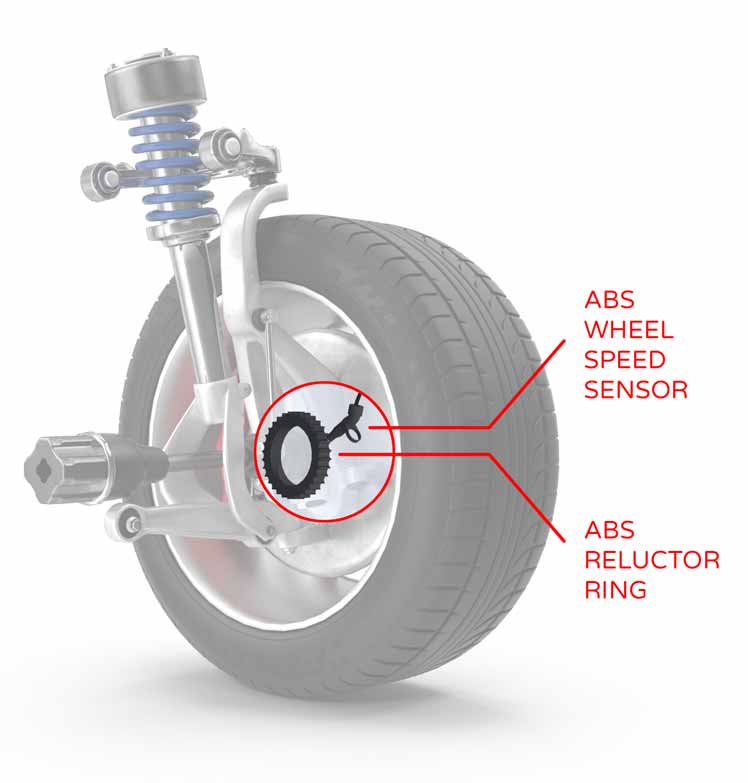
How TPMS Identifies Individual Tires
TPMS has another clever trick up its sleeve. They not only know when the pressure is low but can also identify which tire is causing the trouble. Let’s dive into how they do this.
The 2 Different Types Of TPMS
Direct TPMS
- Sensor Identity: In direct TPMS, each sensor has a unique identity. It’s like a name tag that tells the car’s computer exactly which tire it’s in.
- Calibration: When new sensors are installed, or tires are rotated, a process called calibration makes sure the car knows which sensor is in which tire. It’s like reorganizing your contacts in a phone after you’ve updated some information.
Indirect TPMS
- Monitoring Rotation: Indirect TPMS doesn’t have individual sensors in each tire, so it can’t identify them directly. Instead, it uses the wheel speed sensors to measure how fast each tire is rotating and works out if one is low on pressure. It’s less specific but still pretty smart.
What Happens When You Rotate Tires?
Rotating tires is like playing musical chairs with them. It helps them wear evenly, but what happens to the TPMS sensors when the tires are moved around?
- Direct TPMS: If your car has direct TPMS, the sensors stay with the tires when they’re rotated. The car may need to recalibrate to know the new positions. It’s a bit like telling your computer where you’ve moved the files.
- Indirect TPMS: With indirect TPMS, rotating the tires doesn’t affect how the system works. Since it’s not looking at individual sensors in the tires, it doesn’t matter where they are.
Changing Wheels with Tire Pressure Sensors
Sometimes, people like to change the wheels on their car, either for style or performance. But what happens to the TPMS when you do that?
- Keeping Sensors: If you keep the same tires and only change the wheels, the TPMS sensors stay where they are, and everything continues as usual.
- New Sensors: If you get new tires and wheels, you might need new sensors. If that’s the case, they’ll have to be programmed and calibrated to work with your car.
- Compatibility: Not all sensors work with all cars. It’s like trying to use a phone charger that doesn’t fit your phone. So, it’s important to make sure the new sensors and wheels are compatible with your vehicle.
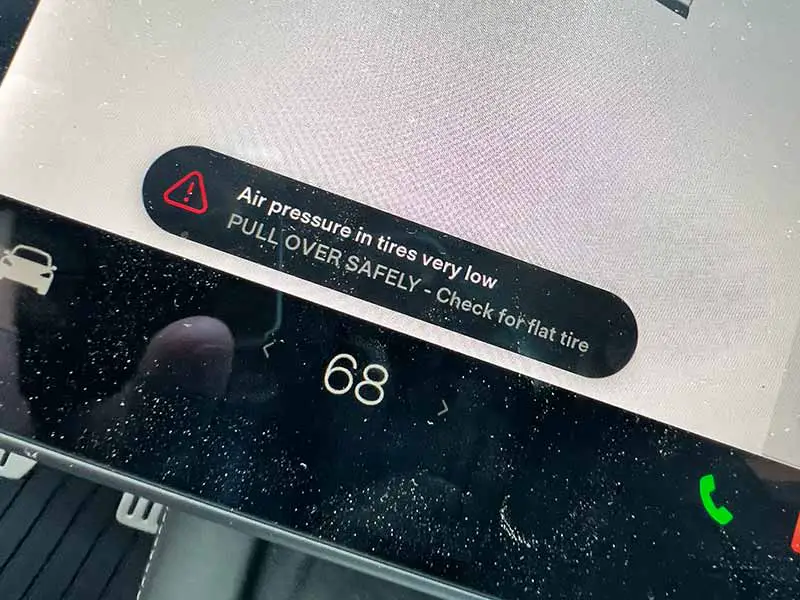
Accuracy of TPMS
When it comes to checking the tire pressure, we want to make sure that the information we get is right on the mark. So, how accurate are these Tire Pressure Monitoring Systems (TPMS)? Let’s find out.
How Accurate are Tire Pressure Sensors?
Direct TPMS
- Precision Monitoring: Direct TPMS sensors, placed inside the tires, are known for being quite accurate. They can usually tell you the tire pressure within 1 or 2 pounds per square inch (psi).
- Real-Time Updates: These sensors provide nearly real-time updates, so you’re getting a current reading of what’s happening inside those tires.
Indirect TPMS
- Less Specific: Indirect TPMS doesn’t measure the pressure directly. It looks at how the tires are rotating and makes a guess. So, it’s usually less accurate than direct TPMS.
- Good for Warning: While it might not give you the exact pressure, indirect TPMS is still good at telling you when a tire is significantly under-inflated.
Factors that May Affect Accuracy
Just like anything else in life, TPMS isn’t perfect. Here are some things that might make it less accurate:
- Temperature Changes: Cold weather can make the pressure drop, while hot weather can make it rise. TPMS reads the pressure inside the tire, so big temperature swings might throw it off a bit.
- Battery Life: Remember those batteries in the sensors? If they start to run low, they might not send the signal as strongly, and that could affect the reading.
- Sensor Damage or Dirt: If the sensor is damaged or gets really dirty, it might not read the pressure correctly.
Why Accuracy Matters
So, why do we care so much about accuracy in TPMS?
- Safety: Properly inflated tires are safer to drive on. If the pressure is too low or too high, it could cause problems on the road.
- Fuel Efficiency: Believe it or not, your tire pressure can affect how much gas your car uses. Keeping them at the right pressure helps you get more miles out of every gallon.
- Tire Life: Tires that are kept at the correct pressure last longer. So, an accurate TPMS can actually save you money in the long run by helping your tires wear evenly.

Triggers and Alerts
One of the coolest things about the Tire Pressure Monitoring System (TPMS) in your car is how it lets you know if something’s not quite right with your tire pressure. But what exactly sets it off, and what does it mean for you as a driver? Let’s break it down.
What Tire Pressure Triggers TPMS?
- Pressure Threshold: Your car has a specific range of what’s considered “normal” for tire pressure. If the pressure goes above or below that range, the TPMS will alert you.
- 25% Rule: Generally, if a tire’s pressure drops by about 25% below the recommended level, the TPMS will spring into action. It’s like an alarm going off when something needs your attention.
Will Over-Inflated Tires Set Off TPMS?
- Yes, They Can: TPMS is looking for anything out of the ordinary. So, if your tires are filled too much and the pressure is too high, it can trigger an alert just like if they were too low.
How Drivers Can Understand and Respond to TPMS Alerts
When the TPMS sends out an alert, it’s telling you to check your tires. But how do you understand what it’s saying, and what should you do about it?
Understanding the Alerts
- Warning Light: Most cars have a specific warning light on the dashboard for TPMS. It might look like an exclamation point inside a tire shape. When you see this, it’s time to check the tires.
- Readout: Some cars even give you a readout of the actual pressure in each tire. This can help you know exactly which tire is having the problem.
What to Do
- Check the Pressure: If you see the TPMS light, the first step is to check the tire pressure with a manual gauge. This will help you know if the TPMS is correct and which tire needs attention.
- Adjust as Needed: If a tire is low, you’ll need to add air. If it’s too high, you’ll need to let some out. Your car’s manual will tell you the right pressure for your tires.
- Seek Professional Help if Unsure: If you’re not sure what to do, it’s always a good idea to ask for help. A professional can check the tires for you and make sure everything is as it should be.
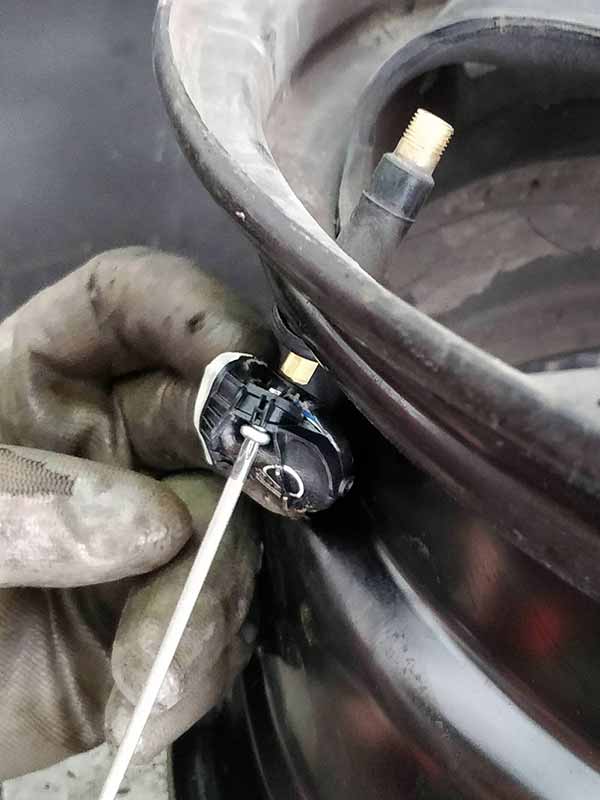
Longevity and Potential Issues with TPMS
Everything wears out eventually, even those handy Tire Pressure Monitoring System (TPMS) sensors in your car. How long do they last, and what happens when things don’t go as planned? Let’s look into it.
How Long Do TPMS Sensors Last?
Battery Life
- Built-In Batteries: TPMS sensors have batteries inside them that help send the pressure information to your car’s computer. These batteries aren’t meant to be replaced, so when they run out, the whole sensor needs to be replaced.
- Average Lifespan: Most of these batteries last about 5 to 10 years. It’s like the lifetime of a really good toy’s batteries.
Wear and Tear
- Daily Use: Just like your tires, TPMS sensors are exposed to the road every day. That can cause wear and tear over time.
- Damage: Hitting a big pothole or bump can damage the sensor, even if the battery is still good.
What Happens When TPMS Battery Dies?
When the battery in a TPMS sensor dies, it’s like a little light going out in your car’s system.
- No More Readings: The sensor can’t send information to the car’s computer anymore. It’s like trying to talk on a phone with a dead battery.
- Warning Light: Most cars will turn on a warning light on the dashboard to let you know something’s wrong with the TPMS. It’s the car’s way of saying, “Hey, check this out!”
Other Common TPMS Issues
Sometimes, other things can go wrong with TPMS. Here are some examples:
- Sensor Damage: As mentioned before, a big bump or even normal wear and tear can hurt the sensor.
- Interference: Other electronic devices could interfere with the TPMS signal. It’s like trying to listen to the radio with a bunch of other noises in the background.
- Mismatched Tires: If your tires are different sizes or types, it might confuse indirect TPMS since it relies on measuring differences in wheel speed.
Handling TPMS Issues
Having problems with TPMS doesn’t mean it’s the end of the road. Here’s what you can do:
- Regular Checks: A regular check by a professional can catch TPMS problems before they become big issues.
- Replacement: If a sensor is broken or the battery is dead, it can be replaced. It’s like getting a new part for a bike.
- Understanding Your Car: Knowing what the warning lights mean and what to do about them can help you take good care of your car.
Resources
Below are some links you may find helpful when learning about tires
Final Thoughts
Tire Pressure Monitoring Systems (TPMS) are more than just a feature in modern vehicles; they are an essential tool for safety and efficiency. Through complex yet highly effective mechanisms, TPMS sensors measure tire pressure, communicate with the vehicle’s computer, and alert drivers when something is off. Whether it’s understanding how the sensors get power, where they’re located, or what happens when changing wheels or rotating tires, the TPMS plays a vital role that drivers often overlook.
In a world where technology is enhancing even the most basic elements of our vehicles, understanding TPMS is not just about curiosity; it’s about being an informed and responsible driver. By knowing what triggers the alerts, how to respond to them, and how to maintain the system, drivers can ensure a safer and more enjoyable ride. It’s one of those hidden gems of automotive technology that silently makes our journeys better every day.
Good luck and happy motoring.
